#Chaoskampf
Explore tagged Tumblr posts
Text
Chaoskampf: The Struggle Against Chaos
What is the Chaoskampf? Chaoskampf, German for Struggle with Chaos, was coined by Hermann Gunkel in 1895 and ascribed to the recurring motif of a God or Cultural Hero battling a Chaos Monster, usually a serpentine or draconic one personifying chaos or the ocean. The myth is then frequently followed by an act of creation. In this post, I’m going to introduce you to some examples of this recurring theme from across cultures.
Given how old this motif is, it’s believed to have existed in the Proto-Indo-European cultures, with this myth being reconstructed based on their descendants. A recurring thread in this myth is to have the dragon or serpent be associated with the waters, while the god is often associated with Storms and Lightning. As a result, it is the reconstructed PIE God of Weather Perkwunos who is said to be the enemy of the PIE Serpent.
Tiamat
Tiamat is the Goddess of Salt Waters in Mesopotamian mythology, said to be the mother of the gods with her consort Apsu/Abzu, the God of Sweet (Fresh) Waters. When Abzu was slain by their children after they learned he was plotting to kill them, Tiamat few into a rage, birthing dragons and monsters to battle the gods. Marduk, the Patron Deity of Babylon, fought Tiamat with the four winds and with arrows, finally slaying her. After her death, her body was used to create the world.
Tiamat’s exact form is unknown, with some debating if she truly would have been something draconic. The description given of her grants a tail, an utter, and a thigh, to she may have been a partially bestial being.
Lotan
In Canaanite Mythology, Lotan is the servant or zoomorphic form of Yamm, the god of the sea. When Yam became the King of the Gods, Ba’al Hadad, a storm god, stood against him, seeking to be King instead. Hadad succeeds in his fight, and usurps Yamm’s place.
Leviathan
The Leviathan is an offshoot of the Chaoskampf motif, though perhaps one that is not readily apparent. God does not need to slay or tame the sea serpent to gain control over creation, it is something he already possesses. But the Leviathan still serves a role as the personification of chaos and the sea, and God’s creation and dominion over it (and eventual slaying of it) is used to represent the same theme that the Dragonslayer version does.
Leviathan’s name seems connected to Lotan, with both sharing similar roots and referring to a coiling, twisting creature.
Also found in Hebrew Mythology are Rahab and Tannin, who are sea monsters akin to the Leviathan, also said to be defeated by God.
Illuyanka
Illuyanka, found in Hittite Mythology, was the enemy of Tarḫunz, Hittite God of the Sky and Storms. There are two versions of this story. In the first, Illuyanka is tricked into getting drunk before being slain. In the second, a mortal assists the defeated storm god by seducing Illuyanka’s daughter, freeing the god so that he can fight and slay the dragon.
Apep
Found in Egyptian Mythology, Apep is the serpent of chaos who dwells in the Egyptian underworld, seeking to devour Ra as he traveled through the underworld at night. He was battled by numerous gods to prevent him from doing so, including Set, a chaotic force in his own right, though one associated with storms. Apep has multiple origins in myth, with some claiming him to be the umbilical cord of Ra, while others state he always inhabited the waters of chaos.
Typhon
Typhon was the enemy of Zeus in Greek myth, being created by Gaia to defeat the gods. Interestingly, Typhon shares some things with two of the previous entries in this post. In many versions of his myth, he manages to defeat Zeus and steal pieces of his body, as Illuyanka did with Tarḫunz. As with that myth, a mortal assists Zeus.
Additionally, the Greeks equated Typhon with the Egyptian Set, the chaotic slayer of Apep.
Typhon himself was described as a monstrous humanoid, with wings and serpents for legs. He had hundreds of dragon heads, which let loose the cries of all sorts of wild beasts. He also did not have much water associations, but rather was considered more Chthonic and associated with storms.
He was created by Gaia to usurp Zeus’ role as King, which has him playing into the theme of defeating the dragon being an act of validation for the king of the gods.
Vritra
Vritra was serpentine personification of drought in Hinduism, In the Vedas, he was said to hold back the waters, causing a drought until he was slain by the storm god Indra. In the Puranas, the story has him defeating Indra, not unlike Typhon’s defeat of Zeus, before being slain in a subsequent battle.
In addition to his role as a drought monster, Vritra was the son of Danu, the goddess said to personify primordial waters.
Xiangliu
A venomous, nine headed snake said to bring floods, Xiangliu was the minister of Gonggong, another draconic being from Chinese Mythology, with both being blamed for the Great Flood. The slayer of Xiangliu varies, with some saying he was killed by Yu the Great, and other saying he and Gonggong were killed by the fire god Zhurong.
Yamata-no-Orochi
Hailing from Japan, Yamata-no-Orochi is the enemy of Susanoo, the Shinto Storm God and brother of Amaterasu. Depicted as an eight headed and tailed serpent or dragon, Yamata-no-Orochi would feed upon the daughters of a family every year, until only one daughter remained.
Yamata-no-Orochi was lured into drinking eight barrels of sake, and once drunk the dragon was sliced to pieces by Susanoo. The sword Grass Cutter was found within the serpent’s tail.
Cipactli
Traveling all the way to the Aztecs, we meet Cipactli. Cipactli was a crocodilian or toad-like monster, covered in mouths and said to live in the primordial waters. The gods, wishing to create the world, lured Cipactli in and slew her, creating the earth from her body.
Veles
Veles was a Slavic god of water, livestock, the underworld, and earth. Associated with bears and serpents, he was said to be the enemy of Perun, the Slavic Storm Deity.
Jormungandr
Jormungandr, the world serpent, is the child of Loki and a sea monster so large he can encircle the entire world. His enemy is Thor, the god of thunder, and when Ragnarok comes the two of them will slay one another.
97 notes
·
View notes
Text
From Chaos With Love

“Chaos is what we've lost touch with. This is why it is given a bad name. It is feared by the dominant archetype of our world, which is Ego, which clenches because its existence is defined in terms of control.”
- Terence McKenna
It is said of every age that none having stood before have experienced such chaos and uncertainty. I would argue that chaos and uncertainty fulfill a purpose unparalleled by any other forces: the transmigration of Love. For every moment in your life that seems to have gone awry, can it not be said that each has allowed you to transcend your limitations, expand your horizons, and reconnect with the core of your being? For every pitfall and loss, have your eyes not opened to a piece of yourself that you wouldn’t have known was there? Every cry of “eureka!” and every act of compassion and grace are borne of uncertainty and chaos. I would argue that it was always so.
In the time before creation, matter and energy existed in a degenerate state. Even consciousness, the emanation of Self, roiled in timeless stagnation. This degenerate state was known as the primordial chaos and the primeval, cosmic, or celestial ocean. In scientific terms, this means that before its expansion, all matter, energy, and consciousness existed in a single dense nucleus. This “atome primitif” or primordial atom, although being the sum composite of the created universe, was no larger than 1/70,000 of a light year. That is roughly the distance between Earth and its Sun. In this primeval state, atoms were compressed so densely that their electrons escaped their orbits and swam freely through the nucleus.
In mythos and religion, this has been expressed within the chaoskampf, a word meaning “struggle against chaos,” the key word being struggle. What comes to mind when you think of that word? I think of binding, resistance, anxiety, obstacles, and fear. What do all of those have in common? The Shadow archetype of the unconscious mind. What we call shadow work is the conscious pursuit of healing and growth by consolidating the repressed, unmanifest aspects of the psyche into the greater whole by accepting and loving these dissonant facets of the Self.
You could argue that this view doesn’t make me a very good Kemetic, to which I would say that I offer a distinction between Nun and Apep. Nun is the primordial ocean, an ageless force of creation knowing ma’at but preceding isfet. He is manifest in the microcosm as the collective unconscious. Apep is the unrestrained, unmitigated aspect of chaos dwelling in the waters of both Nun and the Duat. I consider Apep as a counterpart to Set in that Apep is what Set could be had He not conquered Himself.
I often say that there exists a balance in all things. It is a sentiment that predates the written word. Older still is the greatest force in the created universe, what I call the First Energy. That, my friends, is Love. Fear came into being as a counterbalance, as a way for Love to Know Itself and to bring about the gravity of relationship. This is known as the primordial scission; One (Unity), in becoming Two (Duality), so becomes Three (Reconciliation).
What does this mean in human terms? I would argue that, as individuals and collectives, we are essentially whole. It is our perception, the propagation of what we allow and what we deny which determines our reality. When someone takes the initiative to heal and integrate their personal chaos they contribute to the healing of the greater whole. I can guarantee you that such transformations by no means go unnoticed. I would conclude this with a personal revelation that is by no means unique. One need not work to change the world, but only oneself.
#chaos#shadow#shadow work#love and fear#healing#kemetic#kemeticism#kemetism#set#seth#sutekh#apep#apophis#nigredo#spiritual growth#spiritual awakening#duat#nun#love#fear#tranformation#collective unconscious#chaoskampf
5 notes
·
View notes
Text
Isn't it weird that the battle between Marduk and Tiamat in the Enūma eliš gets framed as order vs chaos with Marduk being order and Tiamat being chaos after the whole plot is triggered by the gods, including Marduk, being chaotic and troublesome and disturbing Tiamat and Apsu who just want to live in peace? I mean, Apsu does overreact slightly, but in the beginning, it's the gods who are chaotic. It's only after Tiamats death that Marduk brings order into the world and lives up to his alignment.
5 notes
·
View notes
Text
I was reading an academic essay about the Chaoskampf and they just casually started talking about My Little Pony and how it's apparently a modern example of it. All this time spent seeing memes and art and references online and this is how I actually learn about the show itself.
4 notes
·
View notes
Text
*sigh*
Listen, the "mammal versus reptile" is an extremely, extremely old motif in human art and culture.
Thousands of years old.
Literally thousands.
Serpents are the enemy of humanity. It's very fundamental to the human brain. Sometimes a different ape is the stand-in for a human, and the serpent can be anything reptillian. Snake, dragon, dinosaur, etc.
It's everywhere.
Movies.

Video games.

Anime.

Toy lines.

It has it's own page on tv tropes.
Why is this such a deep-seated idea in the human psyche?
My personal theory is that it's byproduct of instinctive knowledge of our ancient ancestors about the most dangerous thing on the planet.

I think this is the reason that humans invented the idea of dragons. They're cludged together by our minds out of all the most dangerous traits of the predatory species that mammals had to stay safe from over millions of years.

My point is that "man vs serpent" is one of the first stories that humans ever told.
I don’t understand Godzilla Vs Kong.”who wins an alligator or a monkey” alligator every time. “What if they were both big” what if you had sense. You would see
37K notes
·
View notes
Text
Serpent slaying myths my beloved
Also
Rebellion in heaven myths my beloved
#serpent slaying myths#chaoskampf#struggle against chaos#comparative mythology#proto indo European mythology#ancient near east mythology#greek mythology#yknow cause Prometheus#but I do primarily mean rebellion in heaven to be like the 1 Enoch and other ANE myths specifically
1 note
·
View note
Text
Not sure the true level of forethought and intention behind it, bc I know early concept illustrations had wind and water ninja, but Wind and Water being these primordial elements even the FSM couldn't directly control is a fun idea and while it was. Super Belated in being utilized and delivered to the audience, I enjoy it as a way to explain why The Core Four Elements of the show included Frozen Water and Unstable Air Pressure Output, but not Water or Air/Wind. They were the closest FSM could get, lmao
#i think it was initially more to differentiate the show from ATLA#but with the introduction of Chaoskampf and Enūma Eliš flavoring to the creation myth with seabound#idk i like it :)#lego ninjago#ninjago#first spinjitzu master
6 notes
·
View notes
Text
Levianthan blossoms as hearts
Leviathan blossoms as the heart of creation, ugly and born of destruction
The Leviathan blossoms ARE hearts. They're three-pronged hearts. Wrapped in husks (bodies), with blood-red centers (heart/soul). Look closely, and each Levianthan blossom sports three chambers. It's reptilian, like the Leviathan sea serpents, like the heart of an (Immortal) Snake.
WARNING: Gore (Ketch's heart getting ripped out, mainly)
Like the triparted road that has become the "heart" of our narrative, the Leviathan blossom also symbolizes what's left of Team Free Will: Sam, Dean, Cas:

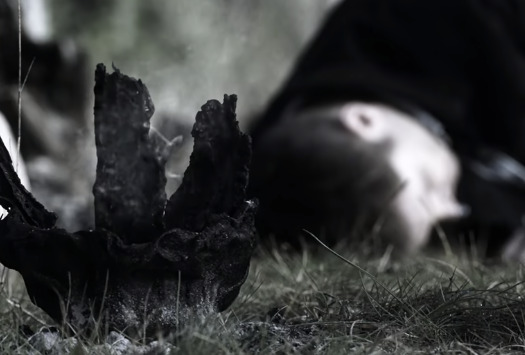
These are familial flowers, signifying the eternal message that family makes you stronger, but it also makes you vulnerable.
///
Hearts are delicious?
Everywhere you look in season 15, Gods and Angels are consuming hearts. Hearts are a classic food of the Gods. (Nectar, ambrosia are legendary as well, and they're after nectar for their spell.) Also, in some versions of Biblical literature, it is the body of the Leviathan that God uses both to feed his chosen ones in the Wilderness and/or create Earth & Heaven.



(1) Ardat kills Ketch by taking his heart. She does this once his heart becomes strong and courageous--once he refuses to give up his friends. (2) The witch screams, "I'll grind your heart to dust." (3) Jack devours a heart.
///
Leviathan flowers + the miracle of death, decay, and rebirth
So. Sprung forth from the Leviathan body of God's oldest enemy, this is the fruit that would allow them to Cage God. It's a betrayal in every sense of the word. It's using the miracle of death, decay, and rebirth against Him.
///
Cas + the little heart he saved
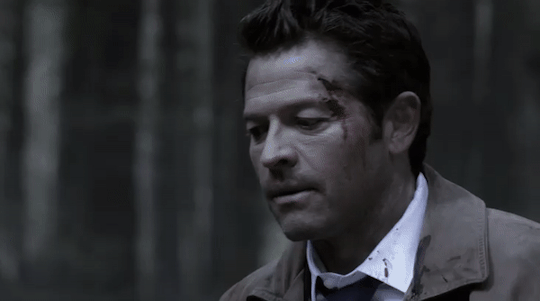
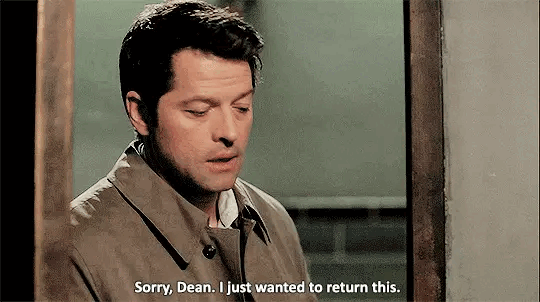
Even though all the other familial hearts were destroyed (reduced to ashes, in fact), Cas saved this one. He stole this little heart, and he fought for it. "Once I had the blossom, I fought." (The blossom was timed to the prayer. The blossom is, in many ways, symbolic of the prayer, too.) It's also the mixtape. He heard it.
///
Later in the episode, we cut to where the blossom is being prepared for the Mark Spell. And two lobules are mostly missing. One is entirely missing, and one is open and weeping, mortally wounded. It resembles a dissected aorta. Only one is intact.


Two hearts are being crushed by this pestle, though only the blood of one party is being spilled.
Cas has saved it, but he's doomed its happiness.
///
Even when you win, you lose
When Sam chooses not to smash the globe, Sam isn't just losing hope. He's choosing not to break Dean and Cas's hearts. Because that's what winning will do.

*looks between them, on the cusp of realizing something*

"I can't. I'm sorry, I just can't." Even when you win (war), you lose so much that it no longer feels like victory.
///
Too bad Chuck was always going to crush them. (How's that for pacifism, eh, Sam?)
Starting with those two.
Cas.
And Dean.




Note the grace-like smoke emission of the orb, as well as the meaty gruesomeness of its guts.
Kill the story by weakening its heart.
#levianthan + hearts#tfw + hearts#spn + leviathan#yahweh vs the leviathan#spn chaoskampf#dean/cas + hearts#dean + cas as faith#sam + the brother who raised me would never give up
8 notes
·
View notes
Note
You know what, yeah. One of the developers explicitly talked about a snake goddess cult vs a bull god cult. I would still expect to see Tiamat take a major role but really the chaoskampf dragon angle would be more in line with that direction than the Qadistu line. Unless their whole deal is they want to be part of the chaoskampf on the side of the chaos dragons.
Also I would like to see both Seth and Typhon to be redesigned in an SMT, and more closely connected plot-wise.
As much as I love the Qadistu quartet, I wished the antagonists of SMTVV were the Chaoskamp dragons like Typhon, Jormungandr, Apep, etc.
That also would have been cool, I think. It's extremely funny that Typhon is still represented in the series as this lizard with the body of an overweight beagle:

32 notes
·
View notes
Text
Death & Chaos - Don't Work Thematically
So, I've been musing recently, but there's two "magic types" I really don't care for, namely, Death and Chaos.
Pretty much entirely because I don't feel either work very well as like, "energy" sources, or "Realms" or "Ideologies" the way they are generally used in fantasy.
See, death is just a state of being that indicates an absence of life, its a term for the mechanisms that keep the body working no longer working. Its not really a "thing" unto itself. Decay is a thing, disease is a thing, but death is just an absence of a thing. This is why most ancient religions had a Psychopomp and not an incarnation of death.
Now, the act of dying or being dead having an effect on someone, especially the divine, does work for me. Most afterlife/Underworld gods were kind of gnarly and kept at arms length or even unable to leave their realms for a reason. But that's not quite the same thing as the idea of death holding power, so much as it is, dying changes you.
Again, its state of being, not a fundamental force.
Similarly, chaos hits a similar thing to me thematically. Chaos is an absence of order, its not a thing unto itself, so much as it is the absence of something. What's more, chaos is inherently contradictory and unpredictable; no character is actually "Chaotic" unto themselves. They might create chaos, but they are not chaotic.
What's more, in the sense of what is chaos for flies is order to spiders, I feel its worth noting in the various Chaoskampf systems it was usually less "Order over chaos" and more, "This one persons order over their foes, or a collection of foes". IE, the chaos was either just the natural world (which has its own order) or multiple competing "orders" and it was the conflict between them that created chaos.
Conclusion:
None of the realms, energies or ideals tied to or rooted in these terms work for me in the sense of being a comprehensible thematic. & when used as such they often contradict themselves to the point of it being distracting to incomprehensible.
Underworlds, spirit realms, places of decay these can work because they aren't just the absence of life they are what comes after life, a changed, altered, different stage of existence.
Similarly, stuff like psyche/emotions, or spirit and freedom work much better as conceptual basis's than chaos, because chaos is entirely in the eye of the beholders I think.
Anyway that's my two cents.
12 notes
·
View notes
Text

Balor, high chief of the Fomorians. Balor was the embodiment of the scorching sun, who brought drought and death to those against him. Balor’s body towered over all who laid eyes on him, with his one eye emanating an abyssal darkness. This eye was said to bring about death whenever it was opened, scorching the earth. Balor prides himself on his ruling of the Fomorians, demons who sought to subjugate the Tuatha dé and humanity. During the Fomorian’s rule over the Tuatha dé, Balor installed a puppet ruler named bres a member of the Tuatha dé whose father was a Fomorian. Under Bres the Tuatha dé and humanity were enslaved. However Balor heard of a prophecy which detailed his fall from the hands of his grandson. To remedy this Balor sent for all of his daughter’s children to be drowned, the only one to survive was Lugh, who faced off against his grandfather in the final battle against the Fomorians. Using his spear, Lugh punched out Balor’s eye, stealing his grandfather’s eye, Lugh used it to decimate the Fomorian army and obtain victory for the Tuatha dé. However Balor still survived and will occasionally return to the mortal world, but he’s always stopped by his grandson, their combat resulting in storms.
Balor’s most common epithet is “Balor of the evil eye” but he has many others, such as “Balor the smiter” and “Balor of the piercing eye”. In modern scholarship it’s believed that Balor was originally a demonic god of the sun, being the incarnation of the harmful effects of the sun’s rays, like burns and droughts. Balor’s battle with Lugh is believed to be reflected in the story of Saint Patrick and Crom Dubh, with Crom Dubh most likely being a reflection of Balor himself. Another being connected to Balor is the fire spirit slayed by Fionn mac Cumhail, who may have been seen as an aspect of Balor. In wales, Balor was reflected in the evil giant Ysbaddaden, who fought King Arthur. Balor’s fight with Lugh comes from a long line of stories that possibly orginated from the myth of Baal’s combat with Yam in Canaan, these stories pervade the religious landscape like the battle between Indra and Vritra, and the Slavic myth of Perun’s rivalry with Veles. All these stories are grouped together under the moniker of Chaoskampf, a battle against the forces of chaos and drought to bring life and fertility to the world.
#art#character design#mythology#creature design#celtic mythology#irish mythology#celtic#irish#balor#fomorian#demon#evil#sun god#fire god#drought god#destruction god
10 notes
·
View notes
Text
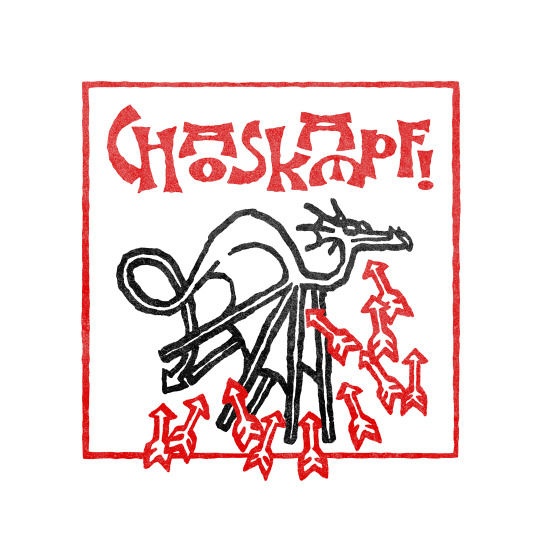
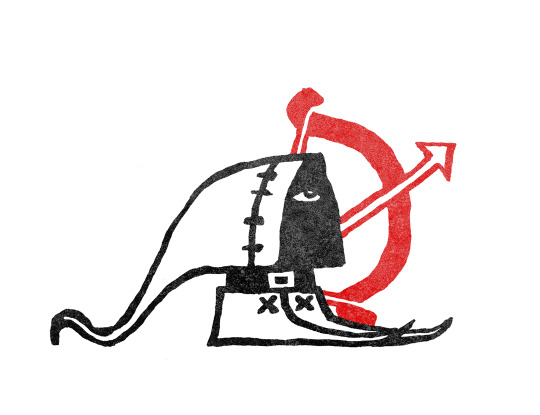

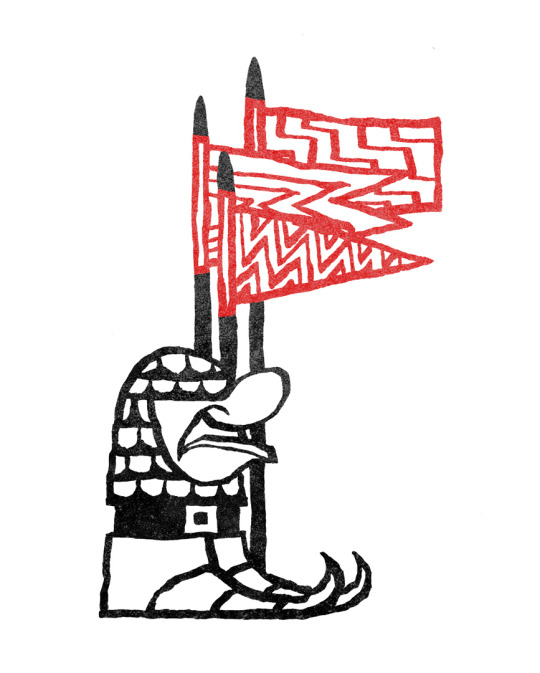
Chaoskampf! Upcoming illustrated poem.
22 notes
·
View notes
Text
i love Yasha getting the last hit and Travis' request from Caleb truly is the most Chaoskampf you can get about this: it's about the primordial sea serpents and heroes of storm and lightning
258 notes
·
View notes
Text

Who is Levi?
Leviathan, Hebrew Livyatan, in Jewish mythology, a primordial sea serpent. Its source is in prebiblical Mesopotamian myth, especially that of the sea monster in the Ugaritic myth of Baal (see Yamm). In the Old Testament, Leviathan appears in Psalms 74:14 as a multiheaded sea serpent that is killed by God and given as food to the Hebrews in the wilderness. In Isaiah 27:1, Leviathan is a serpent and a symbol of Israel’s enemies, who will be slain by God. In Job 41, it is a sea monster and a symbol of God’s power of creation
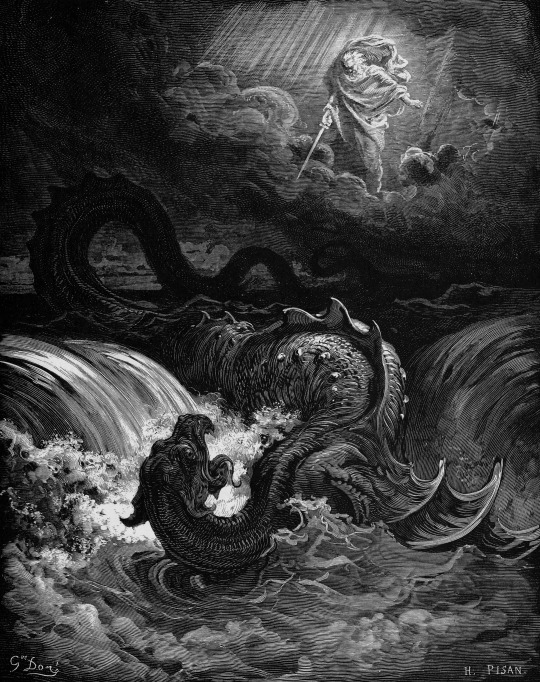
Etymology:
Gesenius (among others) argued the name לִוְיָתָןwas derived from the root לוה lwh "to twine; to join", with an adjectival suffix ן- ָ, for a literal meaning of "wreathed, twisted in folds". If it exists, the adjectival suffix ן- ָ (as opposed to -ון) is otherwise unattested except perhaps in Nehushtan, whose etymology is unknown; the ת would also require explanation, as Nechushtan is formed from neḥšoeṯ and Leviathan from liveyah; the normal-pattern f.s. adjective would be לויון, liveyon. Other philologists, including Leskien, thought it a foreign loanword. A third school considers it a proper noun. Bauer proposed לוית+תן, for "wreath of serpent."
Both the name and the mythological figure are a direct continuation of the Ugaritic sea monster Lôtān, one of the servants of the sea god Yammu defeated by Hadad in the Baal Cycle. The Ugaritic account has gaps, making it unclear whether some phrases describe him or other monsters at Yammu's disposal such as Tunannu (the biblical Tannin). Most scholars agree on describing Lôtān as "the fugitive serpent" (bṯn brḥ) ,but he may or may not be "the wriggling serpent" (bṯn ʿqltn) or "the mighty one with seven heads" (šlyṭ d.šbʿt rašm). His role seems to have been prefigured by the earlier serpent Têmtum whose death at the hands of Hadad is depicted in Syrian seals of the 18th–16th century BC.
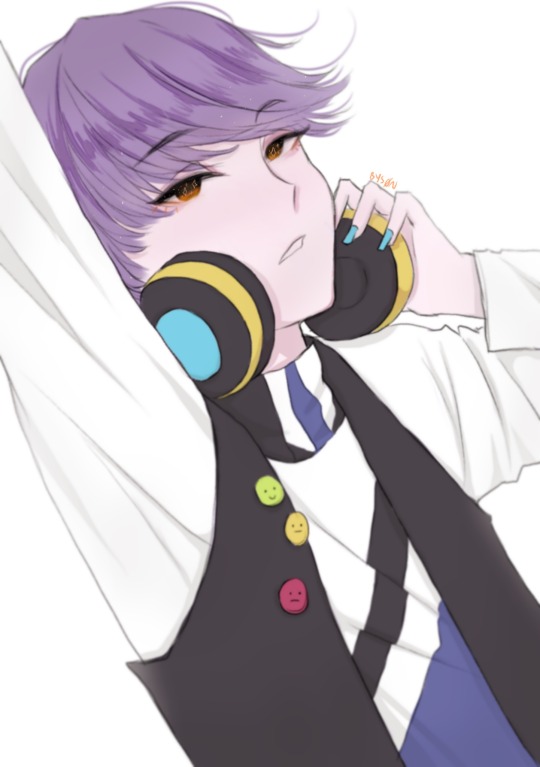
Mythology:
Sea serpents feature prominently in the mythology of the ancient Near East. They are attested by the 3rd millennium BC in Sumerian iconography depicting the god Ninurtaovercoming a seven-headed serpent. It was common for Near Eastern religions to include a Chaoskampf: a cosmic battle between a sea monster representing the forces of chaos and a creator god or culture hero who imposes order by force. The Babylonian creation myth describes Marduk's defeat of the serpent goddess Tiamat, whose body was used to create the heavens and the earth.
—all art was found via Google, it doesn’t not belong to me, but to the artist who created it. If you see any art depicted on my channel that is yours and you do not want it shared, just tell me, I’m on your side ^_^-
#obey me#obey me shall we date#obey me leviathan#obey me!#obey me demonology#obey me origins#3rd husband
87 notes
·
View notes
Note
How do you feel about the concept of Chaoskampf? Since it's a modern term, I personally find it problematic, as it reduces interpretations of mythologies to a box that doesn't necessarily reflect the culture of ancient times. But I'm quite new to this and would like to know the opinion of someone more knowledgeable. Thanks in advance.
Not much to add, really. That's on point. In other words - it's cringe.
8 notes
·
View notes
Text

A concept for a Hydreigon mega Evolution.
It has now grown five additional heads, bringing the total to Eight (hence I nickname it Oracht, from Orochi and Acht)
I wanted it to feel closer to Yamata no Orochi. Its eight heads and the name of its abilty Chaoskampf (Wiki) reflect that.
There should have been more Unova Megas
Also, happy Pokémon Day.
7 notes
·
View notes